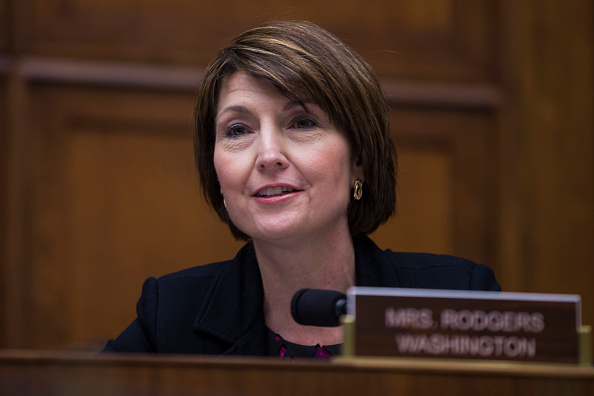Tuesday morning, the U.S. House Energy & Commerce Committee’s Subcommittee on Innovation, Data and Commerce met to discuss the proposed AM Radio for Every Vehicle Act of 2024. While interested parties included contenders from the automotive and consumer technology industries denouncing the bill, there was an overwhelming amount of support from the gathered members of Congress.
The draft language of this bill largely mirrors that of the AM Radio for Every Vehicle Act of 2023 (S. 1669/H.R. 3413), which passed out of the Senate Commerce Committee last summer. In December 2023, an attempt to pass the bill through unanimous consent failed in the Senate. The proposed legislation would require car makers to maintain AM broadcast radio without separate or additional payment, fee or surcharge. The act would also direct the National Highway Traffic Safety Administration to issue a rule mandating AM inclusion in all new vehicles.
Subcommittee Chairman Gus Bilirakis, a Republican representing Florida’s 12th Congressional District, opened the meeting on Tuesday.
Bilirakis said he is in favor of issuing a nationwide standard to make sure new vehicles have access to AM radio; however, he acknowledges the proposed legislation might need to be revised to be in the best interest of all Americans.
“We must get it right. We don’t want to inadvertently hamper innovation both now and in the future,” said Bilirakis in his remarks. “Nevertheless, Americans deserve to have the highest number of options for how they receive information at home and in their cars.”
Rep. Cathy McMorris Rodgers, chair of the House Energy and Commerce Committee, representing Washington’s 5th Congressional District, said: “As we make the transition to these new technologies it is vital that we are mindful of how these decisions inadvertently affect our communities.”
Rodgers said it is concerning that some automakers have taken steps to remove AM radio from newer models while disregarding the impact. In the midst of natural disasters, she said AM radio has often remained resilient, operational and the “calming voice” during the storm.

Consumer Technology Association CEO Gary Shapiro was the first witness to testify before the subcommittee. He said American consumers, not radio broadcasters, should decide what entertainment technologies they have in their cars.
“We believe that marketplace competition, not dictates from the federal government, should determine which technologies thrive and grow,” Shapiro said in his comments.
He continued: “Proposed legislation is especially inappropriate in service of the radio industry, which has historically sought government mandates to survive, rather than investing in technologies that would improve sound quality and reduce audible distortion.”
[Related: “Letter: When It Comes to AM in Cars, Let the Consumer Decide“]
Shapiro said that in trying to comply with AM safeguards, manufacturers would have to work overtime to mitigate electromagnetic interference. He said manufacturers would be forced to implement “burdensome” techniques such as shielding and filtering.
“Burdening the nascent electric vehicle market with unnecessary weight and costs — as this mandate would do — is like forcing American runners to compete in the Olympics while carrying ten-pound weights.”
Melody Spann-Cooper, chair and CEO of Midway Broadcasting Corp., rebutted some of Shapiro’s comments. She emphasized that having a surplus of options to disseminate emergency information doesn’t necessarily mean that those options will remain operational in times of crisis.
“We have seen in recent times how delicate our communications infrastructure can be,” said Spann-Cooper in her testimony. “In February, tens of thousands of mobile users lost service for hours due to what seems to have been human error. We can only imagine the horrors that could follow if such an event resulted from a cyber or security attack.”
“The federal government has a long history of advancing public safety in the automobile, from seatbelts to airbags to backup cameras,” she continued. “Congress should do the same here.”
John Bozzella, president and CEO of the Alliance for Automotive Innovation, was the next to testify. He said AM radio is not necessary to ensure public safety — more specifically he said “any decision by an automaker to remove analog AM radios in vehicles does not eliminate consumer access to emergency alerts or even access to AM radio.”
Bozzella questioned, in his words, why Congress is seeking to mandate a technology that federal agencies have publicly acknowledged is suffering from declining listenership and poor audio quality.
“Today it’s analog AM radio. But what’s next? To address rising crime, would Congress use this new precedent to require bulletproof glass in all new vehicles? We do not believe this is appropriate and it should give all members of Congress pause.”
During the meeting, multiple members of Congress — including Jay Obernolte (R-CA) and Debbie Lesko (R-AZ) — had questions for Bozzella about what additional costs would be imposed on consumers if EV companies had to alter their technology to accommodate for AM radio in-car. No clear answers were given during the discussion. Bozzella said he owed that information to the gathered group.
Justin Ahasteen is the executive director of the Navajo Nation. In his testimony, Ahasteen said AM is a lifeline for the Navajo people. “It’s all we have.”
“The Navajo Nation has poor cell coverage even in our major population centers like Window Rock, and only about 4% of our people have broadband quality internet access,” said Ahasteen. “They rely on AM radio for crucial public safety updates. The stark reality of the Navajo Nation is that we are the 1% that will be affected if we remove AM from cars.”
He emphasized that it is critical that Native American populations have access to lifesaving news in their native languages.
“Our emergency alert infrastructure incorporates the Emergency Alert System, where the Navajo Nation radio station operates as a Primary Entry Point,” said Ahasteen. “This station is crucial for the propagation of emergency alerts to the public through a ‘daisy chain’ system, ensuring that messages reach even the most remote and rural areas within the reservation.”
Overall, there appears to be sustained, bipartisan support for the AM radio mandate. Over the course of the hearing, most members questioned the witnesses in favor of mandating AM radio in cars, drawing out answers that reemphasized how the senior band continues to serve as a critical medium for disseminating information.
As Spann-Cooper said in her testimony, 247 bipartisan members of the House — nearly equally divided between Republicans and Democrats — have cosponsored the AM Radio for Every Vehicle Act.
On April 30, Sen. Ed Markey (D-Mass.), who introduced the bill in May 2023, shared on his website that the act, to date, has received support from 60 members of the Senate.
Also on Tuesday, Curtis LeGeyt, president and CEO of the National Association of Broadcasters, released a statement commending that bipartisan support:
“Broadcasters are grateful for the overwhelming bipartisan support for the AM Radio for Every Vehicle Act in both chambers of Congress,” said LeGeyt. “This majority endorsement reaffirms lawmakers’ recognition of the essential service AM radio provides to the American people, particularly in emergency situations. NAB thanks the 307 members of Congress who are reinforcing the importance of maintaining universal access to this crucial public communications medium.”









